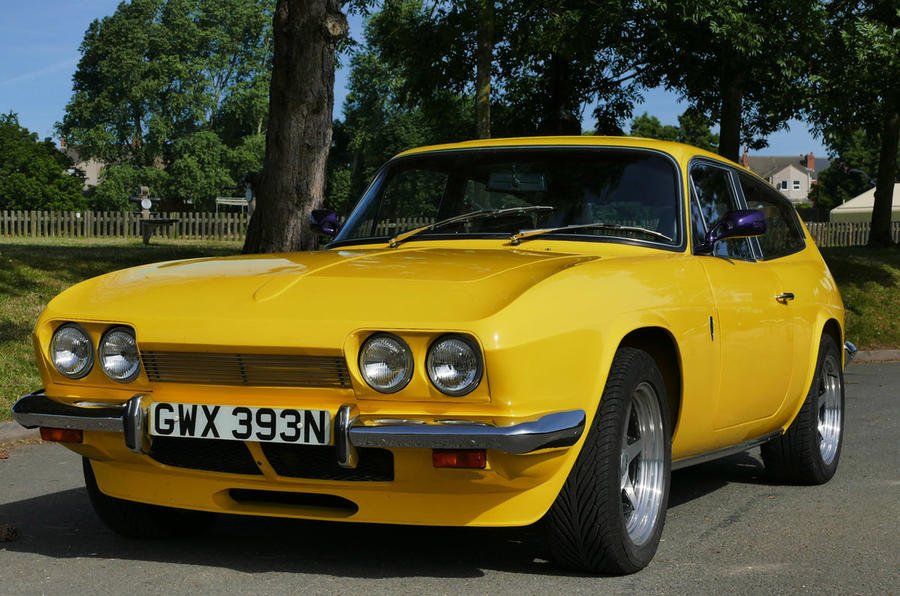For a long while, the Reliant Scimitar GTE was a maligned oddity to be avoided at all costs, but this distinctive-looking shooting brake has finally come of age and now is the time to buy.
Penned by Tom Karen – whose designs for the Bond Bug three-wheeler and iconic Raleigh Chopper bicycle have become emblematic of 1970s Britain – the Scimitar GTE's glassfibre bodyshell is, by its nature, immune to rusting, but it can scare buyers off because any damage repairs or paintwork will be costlier to carry out. That's why neglected cars and unfinished projects can still be found for around £1000.
Numbers dropped steadily throughout the 1990s as the distinctive four-seater fell victim to astronomical insurance premiums and a dubious – some say undeserved – reputation for unreliability, but the downward trend appears to have plateaued and there are now around 900 Scimitar GTEs in the UK, according to howmanyleft.co.uk. So you can take your pick from ready-to-rock restored cars, ratty daily drivers and full-bore barn finds.
Another reason for the Scimitar's relatively high survival rate is that it was produced – in various forms – near enough continuously from 1968 to 1990. The early SE5 model was an instant hit, helping Reliant to increase sales by 20% in the car's first year after launch and quickly outnumbering the outgoing Scimitar GT coupé by four to one.
Continued success came with the arrival of the facelifted SE5A in 1972, which brought improved performance from the 3.0-litre Essex V6 (shared with the Ford Capri), an updated interior and subtly tweaked styling. Reliant sold 5105 units of this new and improved Scimitar, making it the most popular iteration, and it remains the most readily available variant today.
The GTE entered its second generation in 1975 with the launch of the substantially modernised SE6, which had larger doors, improved soundproofing, a bigger fuel tank and – crucially – optional power steering, which vastly improved the driving experience. (Driving an SE5 was so laborious that the steering wheel sometimes cracked under heavy stress.)
In 1980, the Scimitar ditched the Essex motor for its 2.8-litre Cologne successor and a year later finally made the switch to a galvanised chassis, making run-out SE6B models the most reliable and expensive on the market.
Production stopped in 1986, but the Scimitar story didn't end there, with Nottinghamshire-based Middlebridge Scimitar Ltd acquiring the production rights and building its own version of the model.
Powered by a 2.9-litre Ford Scorpio engine and with various chassis upgrades, it could have been a worthy rival to newcomers like the Jaguar XJ and BMW 840, but the company folded just two years later, having built only 78 cars.
An expert's view
Will Sparrow, ex-Reliant dealer and restorer: "The people who have them now look after them. These cars needed sorting out – and I did that as a dealer and then I moved on to restoring them for people. The engines are Ford, so nothing was too difficult. The early ones had chassis problems and the axles used to whine – you could rebuild them and they'd still whine, so that was something you had to live with quite often – but you never had body rust.
Buyer beware...
■ Body: Glassfibre bodywork means that panel rust isn't a concern, but damage repair is a specialist job. Focus your attention underneath – especially on non-galvanised pre-1981 cars – where corrosion is known to eat away at the bumper mounts, wishbone brackets, outriggers and seatbelt anchor points.
■ Engine: Burbling Essex V6 is a durable lump but make sure all fuel lines are solid and securely fixed to avoid the risk of fire. Cast-iron manifolds rust and are commonly replaced with tubular stainless steel items, which are more resilient but cause heat build-up that can damage nearby wiring.
■ Steering, suspension: Front suspension shares components with the much smaller and lighter Triumph TR6, making it a weak spot. Check for worn-out bushes, which can be easily replaced with modern poly items, and any signs of fatigue on the drop links. Non-assisted steering is extremely heavy so seek out cars with power steering.
■ Electrics: As with any British car of this era, the Scimitar's electrical systems are fragile and troublesome, and its glassfibre body makes earthing an issue. Ensure the fuse box – in the engine bay for SE5s and the passenger footwell for the SE6 – has not melted, test all switchgear in the cabin and see that the heater gets up to temperature.
■ Interior: Plastic trim elements don't age well and may need replacing, and leaky window seals cause wet carpets. More seriously, wobbling seats are a sign of weakened chassis mounts.
Also worth knowing
Aftermarket support for the Scimitar is surprisingly comprehensive for what is a relatively niche classic car. Cheshire-based Graham Walker Sports and Prestige – one of the world's leading Scimitar parts suppliers – obtained the production rights to the GTE when Middlebridge collapsed in 1990, which means you can even effectively buy a brand-new example today.

